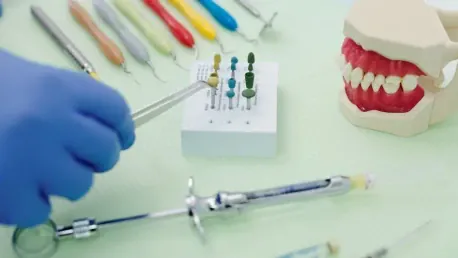Periodontitis remains one of the most common chronic inflammatory diseases affecting millions globally, characterized by an imbalance in the oral microbiome and prompted by pathogenic bacteria. Due to this imbalance, the body’s immune response becomes inefficient, resulting in harm to surrounding tissues and perpetuating a cycle of chronic inflammation. Traditional approaches to treating periodontitis have focused largely on eradicating these harmful bacteria, utilizing methods such as scaling, root planing, and antibiotic therapy. Yet, these treatments often fail to address the immune system’s role in the disease’s progression, which is a critical factor in effectively managing and potentially reversing the condition. This gap has led researchers to explore new avenues and innovative treatment methods that not only target bacteria but also modify the immune response to foster tissue regeneration.
Breakthrough in Periodontitis Treatment: Dual-action Azithromycin
A research team spearheaded by Song Li at the University of California identified a small molecule, azithromycin (AZM), which could alter the landscape of periodontal disease management. AZM serves a dual purpose—first, it inhibits the proliferation of harmful bacteria contributing to the diseased state, and second, it modulates immune cell function to mitigate inflammation. The significance of this finding cannot be overstated, as the ability to address both microbial and immune-related factors simultaneously holds immense promise for more effective treatment protocols. To capitalize on this dual functionality, the researchers designed an innovative delivery system: a dissolvable microneedle patch embedded with biodegradable microparticles.
The concept of using a dissolvable microneedle patch to administer AZM is groundbreaking. Traditional periodontal treatments often involve mechanical procedures or systemic antibiotic administration, both of which come with limitations and potential side effects. In contrast, this new microneedle patch can deliver the therapeutic agent directly to the affected gingival tissues in a localized and painless manner. Published in the journal Med-X, the study involved rigorous in vitro and in vivo experiments, demonstrating that AZM-loaded microneedle patches significantly reduced inflammatory cytokines while boosting anti-inflammatory cytokines and M2 macrophage populations.
Efficacy and Practicality of Microneedle Delivery Systems
The results from the study herald a new era in periodontal therapy, emphasizing the practicality of AZM’s dual action in clinical settings. In vivo tests with the microneedle patch fostered not only tissue healing but also bone regeneration, essential for restoring periodontal structures affected by the disease. Interestingly, the study further examined the efficacy of microparticles carrying anti-inflammatory interleukin-4, both independently and in conjunction with AZM microparticles. The outcomes were promising, showcasing equal or even slightly superior therapeutic effects, thus broadening the horizons for combinatory treatment strategies.
The dual-action mechanism of AZM, which concurrently suppresses bacterial growth and mitigates immune responses, underscores its potential as a comprehensive therapy. By eliminating the necessity for separate antibacterial and immunomodulatory agents, this streamlined approach can yield more effective results and simplify treatment regimens for both patients and healthcare providers. The microneedle patch, in particular, enhances this process through its targeted and pain-free delivery method, suitable not only for periodontitis but also adaptable for other chronic inflammatory diseases. This could pave the way for broader applications, ultimately benefiting a wide patient demographic.
Future Implications and Research Directions
The study’s findings mark a new chapter in periodontal therapy by highlighting the practical benefits of AZM’s dual action in clinical scenarios. Tests conducted in vivo with the microneedle patch showed not only tissue healing but also bone regeneration, which is crucial for restoring periodontal structures damaged by disease. The study also delved into the effectiveness of microparticles carrying anti-inflammatory interleukin-4, both alone and alongside AZM microparticles. The promising outcomes demonstrated equal or even superior therapeutic effects, paving the way for innovative combinatory treatments.
AZM’s dual-action mechanism, which inhibits bacterial growth and reduces immune responses, underscores its potential as an all-encompassing therapy. This approach eliminates the need for separate antibacterial and immunomodulatory agents, offering more effective results and simplifying treatment regimens for patients and healthcare providers. The microneedle patch further enhances this process through its targeted, pain-free delivery system. Not limited to periodontitis, this method could be adapted for other chronic inflammatory diseases, potentially benefiting a broader patient population and leading to wider applications in medical treatments.









